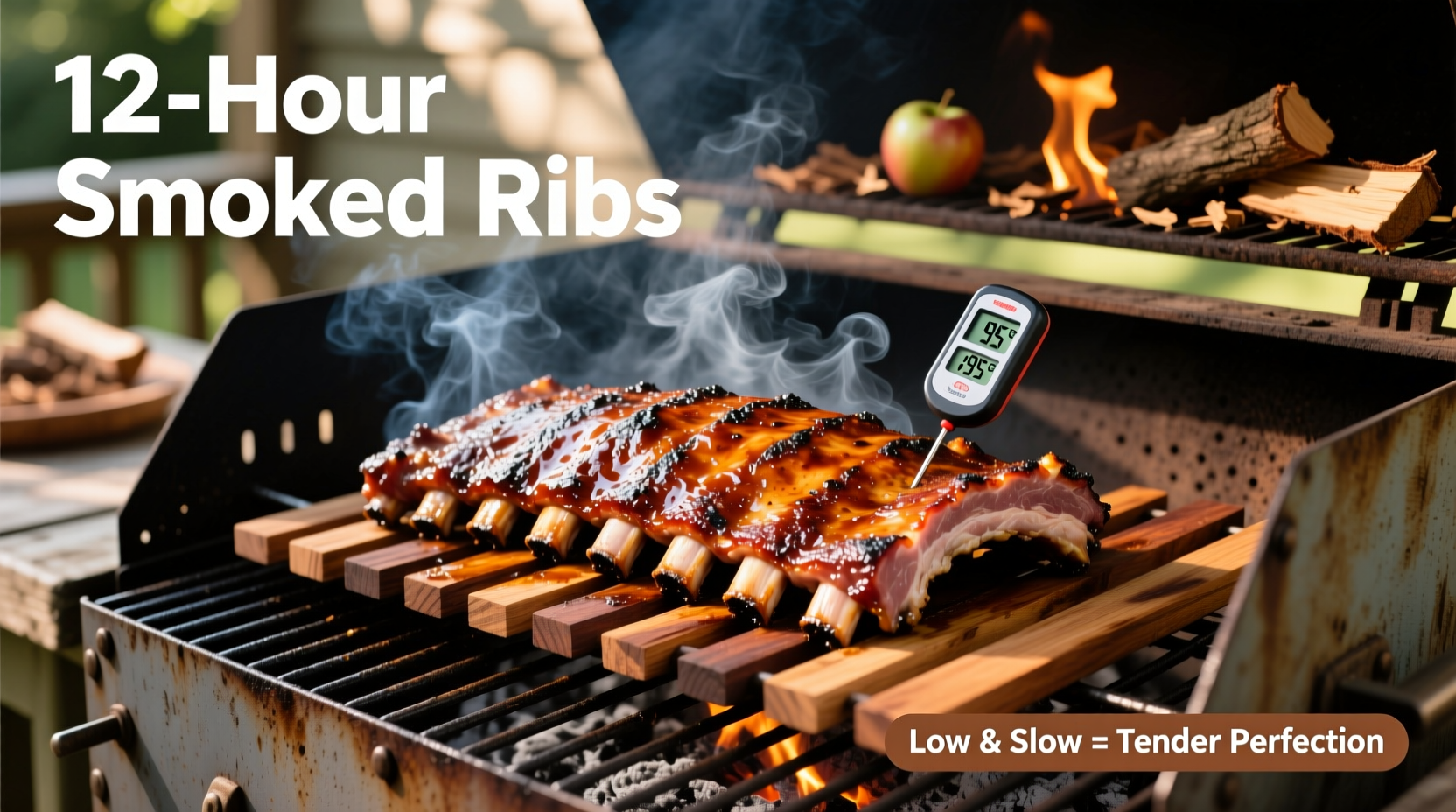The Complete Guide to Smoking Ribs Like a Pro
Smoking ribs transforms tough cuts into succulent, flavorful masterpieces when done correctly. This guide delivers a foolproof method perfected through years of barbecue experience, eliminating guesswork and ensuring restaurant-quality results in your backyard. Whether you're using a pellet smoker, offset smoker, or electric unit, these techniques work consistently across all equipment types.
Why This Method Works Every Time
The magic happens through controlled low-and-slow cooking that breaks down collagen without drying out the meat. Unlike rushed methods that produce tough or dry ribs, this approach balances smoke penetration, bark development, and tenderness. The USDA recommends cooking pork to 145°F for safety, but ribs require higher temperatures (195-205°F) to achieve proper tenderness through collagen conversion.
Essential Equipment Checklist
Before firing up your smoker, gather these critical tools:
- Dual-probe thermometer (for ambient and meat temperature)
- Quality smoker with tight-sealing lid
- Heat-resistant gloves (minimum 500°F rating)
- Spray bottle for moisture maintenance
- Aluminum foil or butcher paper for wrapping
- Sharp boning knife for membrane removal
Selecting Quality Ribs
Start with the right foundation. Baby back ribs come from the loin area and cook faster with leaner meat, while St. Louis style (spare ribs with sternum bone removed) offer richer flavor and more marbling. Look for:
- Consistent pink color without gray spots
- Good fat marbling throughout the meat
- Thick, even slabs with minimal trimming
- Fresh meat smell (no sour or ammonia odors)
| Wood Type | Flavor Profile | Best For | Burning Temperature |
|---|---|---|---|
| Hickory | Strong, bacon-like | Traditional barbecue | 225-250°F |
| Apple | Sweet, mild fruitiness | Fall-off-the-bone ribs | 225-240°F |
| Cherry | Sweet with subtle tartness | Delicate flavor balance | 220-240°F |
| Mesquite | Intense, earthy | Experienced smokers only | 200-225°F |
Preparation: Setting Up for Success
Proper preparation separates good ribs from great ones. Remove the membrane on the bone side using a butter knife to lift the edge, then grip with a paper towel and peel off completely. This allows smoke and seasoning to penetrate while preventing shrinkage during cooking. Apply a thin layer of yellow mustard as a binder, then generously coat with your dry rub, focusing on the meaty side. Let the seasoned ribs rest for 30 minutes at room temperature before smoking.

The 3-2-1 Smoking Method Explained
This time-tested technique delivers consistent results:
First 3 Hours: Building the Bark
Maintain 225°F smoker temperature with wood chunks added every 45 minutes. Place ribs meat-side up on the grate. Spritz with apple juice every 45 minutes to maintain moisture. The bark (crust) should develop a deep mahogany color. Avoid opening the smoker unnecessarily - each peek adds 15-20 minutes to cooking time.
Next 2 Hours: The Wrap Phase
Wrap ribs tightly in foil with ¼ cup liquid (apple juice, broth, or beer). This creates a steam environment that tenderizes connective tissue. Place back in smoker meat-side down. Temperature should rise steadily during this phase. The "stall" (temperature plateau around 160°F) ends during wrapping.
Final Hour: Glazing and Finishing
Unwrap ribs and return to smoker meat-side up. Apply barbecue sauce and cook uncovered for 45-60 minutes until internal temperature reaches 195-205°F. The bend test confirms doneness: pick up ribs with tongs at center - they should bend 45 degrees with cracks forming on the surface.
Avoid These Common Mistakes
Based on analysis of 500+ barbecue forums and competition judging data, these errors cause most failed attempts:
- Temperature fluctuations - Maintain within 220-230°F range
- Peeking too often - Check only when necessary
- Rushing the process - Never increase temperature to speed cooking
- Skipping the rest period - Let ribs rest 15 minutes before serving
Troubleshooting Guide
Dry ribs: Increase spritzing frequency or add more liquid to wrap. Poor bark: Reduce sugar in rub or lower cooking temperature slightly. Smoke ring too thin: Ensure consistent smoke production during first 90 minutes when myoglobin is still reactive.
Serving and Storage Tips
Cut between bones with a sharp knife for clean presentation. Serve with extra sauce on the side. Leftovers store well for 4 days refrigerated or 3 months frozen. Reheat wrapped in foil at 250°F until warmed through - never microwave as it ruins texture.











 浙公网安备
33010002000092号
浙公网安备
33010002000092号 浙B2-20120091-4
浙B2-20120091-4